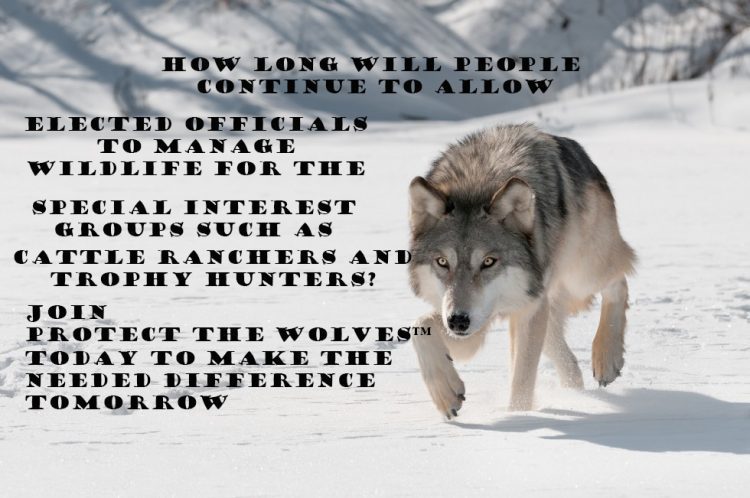
It is past time that we begin to hold the USDA accountable and rein in their squandering of Taxpayer Funds!
December 20, 2017
VIA EMAIL AND U.S. MAIL
Connie Williams, Chief, Program Evaluation and Decision Support
Quality of Information Officer
USDA Animal and Plant Health Inspection Service
4700 River Road, Unit 120
Riverdale, MD 20737
Connie.M.Williams@aphis.usda.gov
(301) 851-3087
RE: COMPLAINT ABOUT INFORMATION QUALITY
Dear Ms. Williams,
PEER respectfully submits this complaint about Data Quality.
Pursuant to Section (b)(2)(B) of the Data Quality Act of 2000 (“DQA”), Section 515 of
Public Law 106-554, and the Correction of Information mechanism of the U.S. Department of
Agriculture Information Quality Guidelines, Public Employees for Environmental Responsibility
(“PEER”) hereby challenges data manipulation and conclusions drawn therefrom by the U.S. Department
of Agriculture (“USDA”), as detailed infra. PEER is especially concerned about the government’s
dissemination of faulty research that has been erroneously used to justify harmful, commonplace,
and excessive coyote control and extermination policies throughout federal lands despite more
recent, thorough, and peer-reviewed scientific studies demonstrating the importance of large
mammalian carnivores contributing to ecological health and stability. Specifically,
PEER challenges the government’s continued reliance upon the USDA-funded study Connolly, G.E., and
W.M. Longhurst, 1975, The effects of control on coyote populations: A simulation model, University
of California, Division of Agricultural Sciences Bulletin, Volume 1872, 37 pp. (hereinafter
“Connolly and Longhurst study”).
The USDA has consistently used this study for over 40 years, despite its established
flaws and disputed findings, to justify large-scale coyote extermination efforts – even though the
study’s own findings stated that eradication efforts were not an effective means of preventing
depredation. In addition to being used to justify large-scale coyote control (i.e., killing2programs),
this obscure (i.e., a small agricultural bulletin) and non-peer reviewed study has been
cited and utilized in a variety of USDA documents over the years to justify a variety of agency
actions related to coyote management. See, e.g., Paul L. Hegdal et al., Hazards to Wildlife
Associated with 1080 Baiting for California Ground Squirrels, USDA National Wildlife
Research Center – Staff Publications (1979); Guy E. Connolly, The Effects of Control on Coyote
Populations: Another Look, Symposium Proceedings—Coyotes in the Southwest: A Compendium of Our
Knowledge 23 (1995); Kathleen A. Fagerstone and Gail Keirn, Wildlife Services—A Leader in
Developing Tools and Techniques for Managing Carnivores, USDA National Wildlife Research Center –
Staff Publications (2012); Eric Gese, Demographic and Spatial Responses of Coyotes to Changes in
Food and Exploitation, Wildlife Damage Management Conferences—Proceedings 131 (2005); John L.
Gittleman et al., “References” for Carnivore Conservation, USDA National Wildlife Research Center –
Staff Publications (2001); Gary Lee Nunley, Present and Historical Bobcat Population Trends in New
Mexico and the
West, Proceedings of the 8th Vertebrate Pest Conference 177, 180 (1978); Stewart W. Breck et al.,
Evaluating Lethal and Non-Lethal Management Options for Urban Coyotes (2016); William C. Pitt et
al., An Individual-Based Model of Canid Populations: Modelling Territoriality and Social Structure
(2003); USDA, 5 Year Environmental Monitoring Review for Predator Damage Management in Montana: FY
2002 through FY 2006 (2007).
Furthermore, USDA has relied upon this study for justification of coyote eradication efforts or
large scale control (i.e., killing) programs in numerous Environmental Assessments
and findings of no significant Impact under the National Environmental Policy Act, 42 U.S.C. §
4321, et seq (“NEPA”). This includes, but is not by any means limited to, Final EA: Predator Damage
and Conflict Management in Idaho (2016); Final EA: Reducing Coyote Damage to Livestock and rther
resources in Louisiana (2016); EA: Mammal Damage Management in the Commonwealth of Massachusetts
(2015); EA: Reducing Mammal Damage in the State of North Carolina (2015); EA: Mammal Damage
Management in the State of Rhode Island (2014); EA: Mammal Damage Management in Arkansas (2013);
Decision and Finding of nosSignificant impact: Reducing Mammal Damage through an Integrated
Wildlife Damage Management Program in the State of New Jersey (2004); Decision and finding of no
significant Impact for Management of Coyote, Dog, and Red Fox on livestock in the Commonwealth of
Virginia (2002); Environmental Assessment and Decision/Finding of no significant impact for
Predator Damage Management in the College Station Animal Damage Control District Texas (1997).
While USDA guidelines limit challenge of material used in NEPA documents to the public comment
period for each NEPA document, it is evident from the recent and continued use of this study in
justifying coyote eradication and control efforts that the study is being disseminated by the USDA
and is clearly influential in both state and federal wildlife agency decision and policy-
making, despite its faulty nature.
[gview file=”http://protectthewolves.com/wp-content/uploads/2017/12/12_20_17_PEER_DQA_Complaint.pdf”]